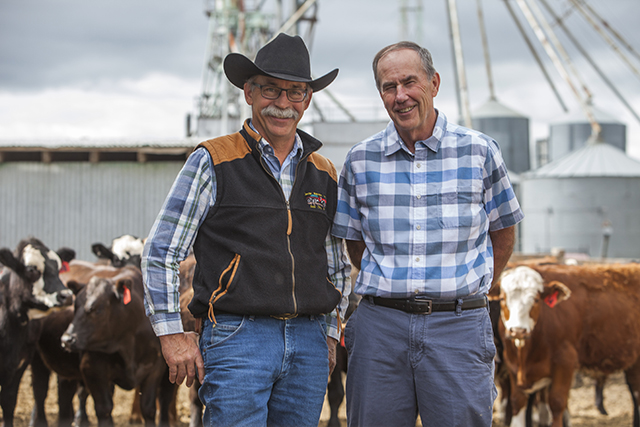
Research key to weathering market changes
In a lifetime worth of work in cow-calf and cattle feeding research, John McKinnon has watched time and again as the beef industry has ebbed and flowed.
By HenryTye GlazebrookHe remembers as recently as two years ago an industry that was enjoying record prices and profits. But he also cautiously notes the inevitable lows that trail any highs.
“Calf prices were high, profit margins in feeding cattle were the likes that had never been seen before. Many in the industry were optimistic about expansion. Then we moved into the last two years, and we’ve seen a dramatic drop in prices. That’s the nature of the industry,” he says.
As Beef Industry Research Chair and a professor of animal and poultry science at the University of Saskatchewan, McKinnon is on the front lines of cutting-edge research in his field. In his experience, investing in the latest technologies and research is the best path toward reducing the impact of market declines.
That investment comes in the form of the Livestock and Forage Centre of Excellence (LFCE), a unique complex that unites every link in the livestock production chain under a single banner at the U of S.
“If we’re going to have a sustainable beef industry, we have to have the latest research, the latest technology, the development of people … who have the background and training to be able to withstand the challenges of the industry,” he says.
“We can take out some of those lows, take out some of those highs, and have an industry that can really grow over time — really serve the beef industry as well as grow Saskatchewan, grow Western Canada.”
McKinnon’s work revolves around research that’s nearing commercial application. He has helped shape areas such as cattle feeding, carcass quality and the development and testing of new feed while pursuing reduced production costs.
In his own field, the LFCE will augment his research in immediate and obvious ways.
“When we look at the new facility, we will have state-of-the-art equipment in terms of being able to measure feed intake on individual animals, to be able to look at the interaction between an animal's genotype and how it’s utilizing feed and to what extent, as well as a focus on forage breeding and utilization,” explains McKinnon.
He adds that researchers will be able to conduct intensive rumen and metabolic studies looking at how an animal is digesting feed and utilizing it — and then follow up with small and large pen research that brings the results closer to commercial application.
“The facilities and techniques that will be available to us are ones that we just do not have access to today. It will greatly expand the scope of the research that we will be able to do.”
McKinnon is excited to see the ways that the LFCE will benefit the U of S and fortify its place as a leader in livestock and forage research. It will also help to attract new collaborators and that same influx of new minds will help bolster the university’s academic and research teams.
“As we hire new faculty and look at faculty replacement, these individuals are going to have the chance to not just utilize a world-class facility for their research but to have the ability to build collaborations with scientists and industry from across the country.”
He adds that the boost created by the LFCE will not be limited to the U of S but will expand outward into the rest of Canada and beyond.
“As the Saskatchewan industry grows and grows, the Canadian industry trends in the same fashion. We’re not independent of it,” says McKinnon. “It’s going to have an impact nationally and internationally, as well as through students that we train, and through our technology transfer activities.”
McKinnon has seen great enthusiasm for the LFCE project in Saskatchewan and elsewhere.
“There is tremendous buy-in. When I go to Alberta or Manitoba and talk about it, people are excited about it,” says McKinnon. “Anticipation is building for it, and that’s a great thing to see.”

